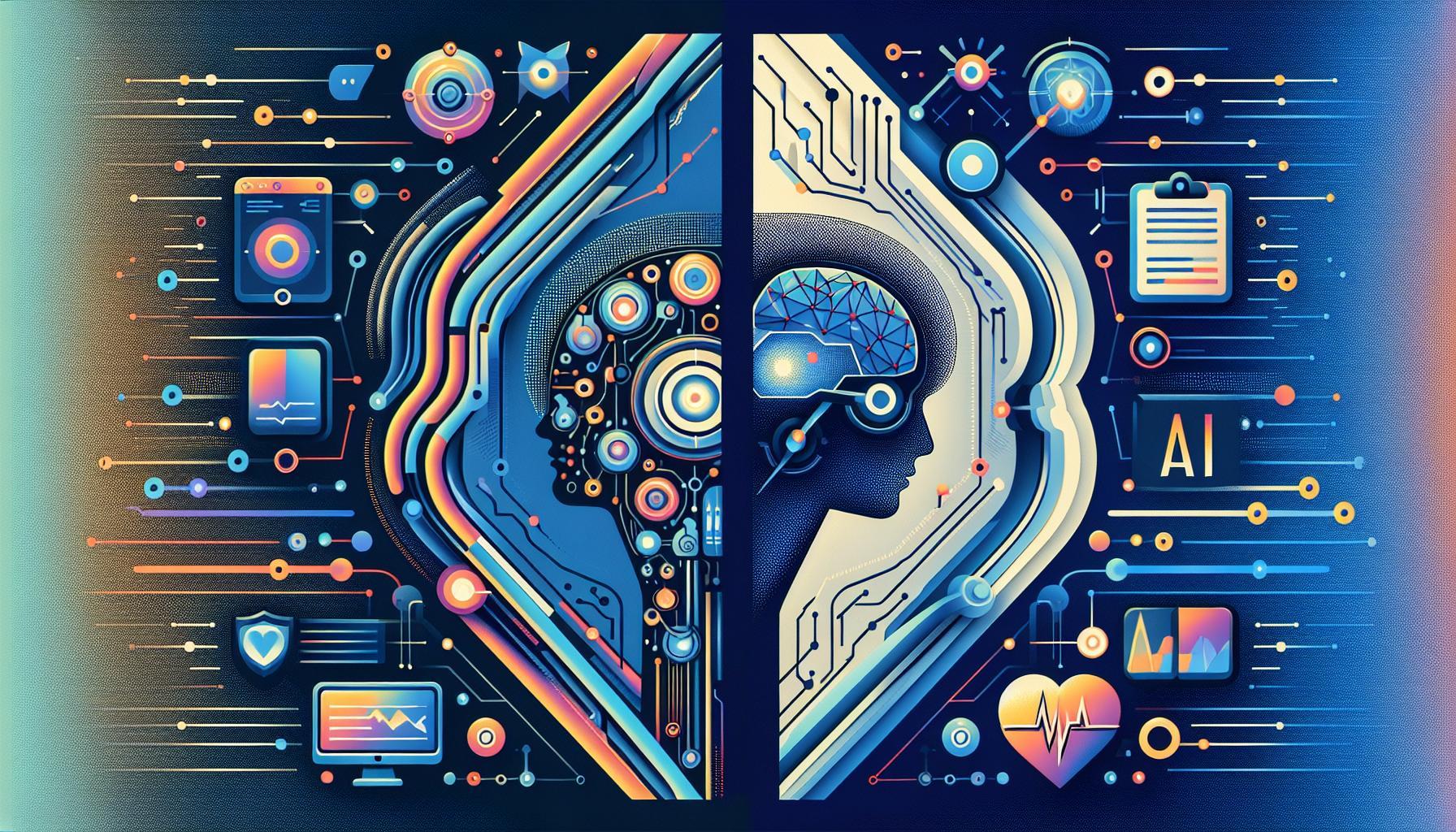In today’s fast-paced digital landscape, manual testing can hinder productivity and innovation. Leveraging AI for automated testing not only enhances efficiency but also ensures more accurate results. This article explores practical automation tips to seamlessly integrate AI solutions, helping teams reduce errors and accelerate their development cycles, ultimately driving success in their projects.
Understanding the Need for Automated Testing in Software Development

In an era where speed and precision are paramount, the integration of automated testing into software development is not just advantageous, but essential. With the increasing complexity of software applications, traditional testing methods struggle to keep up with the rapid development cycles demanded by modern businesses. Automated testing, aided by AI technologies, offers a solution that enhances efficiency and accuracy while reducing human error.
Benefits of Automated Testing
Implementing automated testing can transform how teams approach software development. Some key benefits include:
- Speed and Efficiency: Automated tests can be run quickly and frequently, allowing teams to identify issues early in the development process. This is particularly beneficial when used in continuous integration/continuous deployment (CI/CD) pipelines.
- Consistency: Automated tests perform the same operations every time they are executed, eliminating variations that may occur with manual testing.
- Scalability: As software systems grow in complexity, automated testing can easily scale, handling more tests without a proportional increase in time and resources.
- Cost-effectiveness: While the initial setup of automated testing may require investment, the long-term savings from reduced testing time and fewer post-deployment issues often outweigh the costs.
Practical Implementation with AI
Incorporating artificial intelligence into the automated testing framework can further enhance performance. Utilizing AI can streamline the process of test generation and maintenance. For example, AI can analyze code changes and automatically adjust existing test cases or generate new ones based on modified functionalities. This adaptability ensures that testing remains relevant as the software evolves.
Real-world applications of AI in automated testing include:
| Application | Description |
|---|---|
| Test Case Generation | AI algorithms analyze application code and create optimized test cases to cover potential edge cases. |
| Regression Testing | AI can identify areas of code that have changed and suggest specific tests that should be rerun to validate those changes. |
| Error Prediction | Machine learning models can predict areas in the code where bugs may appear based on historical data, allowing for proactive testing. |
By employing techniques outlined in resources like “How to Use AI to Replace Test in Files: Practical Automation Tips,” organizations can unlock the full potential of automated testing, ensuring a seamless transition from development to deployment while maintaining high quality and performance standards. The strategic adoption of automated testing and AI not only enhances existing processes but also positions organizations ahead of the curve in an increasingly competitive digital landscape.
Exploring How AI is Revolutionizing Test Automation
In today’s fast-paced digital landscape, the demand for efficiency and accuracy in software testing has never been higher. Traditional test automation methods are often time-consuming and prone to human error, which is where artificial intelligence (AI) comes into play. AI technologies are fundamentally transforming test automation by introducing smarter, more adaptive solutions that streamline processes, increase coverage, and ultimately reduce costs.
AI-Powered Test Automation: A Game Changer
AI is revolutionizing test automation in several impactful ways:
- Improved Test Coverage: AI algorithms can analyze application code and generate tests that cover more scenarios, including edge cases that human testers might overlook.
- Enhanced Efficiency: By automating mundane and repetitive tasks, AI frees up human testers to focus on complex issues and exploratory testing, leading to quicker release cycles.
- Adaptive Learning: Through machine learning, AI systems can learn from previous test executions to improve future testing strategies, thereby optimizing test suites over time.
- Cost Reduction: Automating testing processes with AI can significantly lower operational costs by reducing the need for extensive manual testing efforts.
Practical Implementation Strategies
To harness the potential of AI in test automation effectively, organizations can adopt a few practical strategies:
- Integrate AI Tools into Current Frameworks: Evaluate existing test automation frameworks and incorporate AI tools that can enhance test execution and analysis. For example, tools such as Test.ai or Applitools can manage visual testing using AI algorithms to identify discrepancies in UI elements.
- Utilize AI for Continuous Testing: In continuous integration/continuous deployment (CI/CD) environments, employ AI to facilitate continuous testing. AI can automatically identify new features that require testing based on changes in the code repository, ensuring immediate feedback on the quality of new functionality.
- Leverage Predictive Analytics: Use AI to analyze historical testing data and predict potential failures or defects in upcoming releases. By identifying trends, teams can proactively focus their testing efforts where they are most needed.
Case Study: AI in Action
To illustrate the effective use of AI, consider a leading e-commerce company that implemented AI-driven test automation to manage its rapidly growing product catalog. Initially, the manual testing process was labor-intensive, requiring significant resources to validate new functionalities and updates regularly.
By adopting AI tools, the company achieved a remarkable transformation. Here’s a brief comparison of their processes pre- and post-AI implementation:
| Aspect | Before AI Implementation | After AI Implementation |
|---|---|---|
| Test Coverage | 70% | 95% |
| Testing Time | 2 Weeks | 2 Days |
| Defect Detection Rate | 80% | 98% |
| Cost Savings | $150,000 | $300,000 |
By leveraging AI, the company not only enhanced its testing efficiency and effectiveness but also accelerated its time to market, giving it a significant competitive edge.
Through implementing AI-driven strategies in test automation, businesses can significantly enhance their testing capabilities. Applying the insights gathered from “How to Use AI to Replace Test in Files: Practical Automation Tips” empowers teams to develop robust and effective testing procedures that adapt to changing demands and technologies.
Key AI Technologies That Facilitate File Testing

Artificial Intelligence has revolutionized the realm of file testing, automating processes that traditionally consumed significant time and resources. Leveraging AI technologies can enhance the accuracy and efficiency of testing files, reducing human error while speeding up the testing lifecycle. By understanding the key AI technologies that facilitate this transformation, teams can implement practical automation strategies and optimize their workflows.
Machine Learning Algorithms
At the heart of AI-driven file testing are machine learning algorithms, which analyze patterns in data to predict outcomes and identify anomalies. These algorithms can be trained on historical testing data, learning to distinguish between valid and invalid files based on established criteria. For instance, if a bank processes millions of transactions daily, machine learning can predict which files are likely to contain errors, streamlining the review process.
Natural Language Processing (NLP)
Natural Language Processing plays a crucial role in scenarios where file content includes text that needs understanding, validation, or interpretation. NLP can be applied to check the consistency of terms, linguistic accuracy, and context appropriateness within documentation files. For example, in legal or compliance documentation, NLP tools can identify variations in language usage or flag risky language, ensuring greater adherence to regulatory requirements.
Automated Testing Tools
Automation tools powered by AI can run extensive tests on files across various formats at speeds unattainable by manually operated processes. These tools can simulate user behavior, ensuring that every function performs as expected. Some popular options in the market include:
- TestComplete – Offers a user-friendly interface that integrates AI capabilities for seamless execution of automated tests.
- Applitools – Utilizes visual AI to detect visual discrepancies in files and applications.
- Ranorex – Features robust test automation tools enhanced with AI to improve accuracy and efficiency.
The combination of these technologies can dramatically enhance the file testing process, aligning it more closely with goals of accuracy and speed while minimizing costs associated with error correction and compliance failures. As businesses seek to improve their automation strategies, integrating these AI technologies will prove invaluable in achieving operational excellence.
Step-by-Step Guide to Implementing AI in Your Testing Workflow

In today’s fast-paced tech environment, teams are continually seeking innovative solutions to enhance efficiency. One area ripe for transformation is the testing workflow, where Artificial Intelligence (AI) can dramatically reduce manual tasks and improve accuracy. Integrating AI into your testing processes not only automates routine functions but also provides valuable insights that can enhance overall software quality. Let’s explore a structured approach for effectively incorporating AI into your testing framework.
Assess Your Current Workflow
Before you can implement AI tools, it’s essential to evaluate your existing testing workflow. Identify the areas that consume the most time and resources. Ask yourself:
- What types of tests are most frequently performed?
- Are there repetitive tasks that could be automated?
- What are common sources of errors in your current processes?
This assessment will help pinpoint the specific pain points that AI solutions can address, be it regression testing, performance analysis, or bug detection.
Choose the Right AI Tools
With a clear understanding of your needs, the next step is selecting the appropriate AI tools for your testing workflow. Look for solutions that align with your goals and are compatible with your existing technologies. Some AI tools to consider include:
| Tool Name | Description | Best For |
|---|---|---|
| Test.ai | An AI-driven test automation platform that simulates human-like interactions. | User Interface Testing |
| Applitools | Visual AI testing that enables automatic visual verification of applications. | Cross-Browser Testing |
| Functionize | Combines AI with natural language processing to create automated tests. | API and Functional Testing |
When evaluating these tools, consider factors such as ease of integration, scalability, and user support. Opt for tools that provide a trial or demo version to assess their effectiveness before committing.
Integrate and Train Your Team
Once you’ve selected the right tools, the integration process begins. Collaborate with your development and QA teams to ensure a smooth adoption of the new AI solutions. This step often includes:
- Setting up the tools within your existing CI/CD pipeline.
- Running pilot projects to familiarize the team with AI functionalities.
- Creating training sessions to ensure everyone is equipped to utilize these new tools effectively.
Moreover, fostering a culture of innovation and continuous improvement will encourage your team to experiment with AI-driven methodologies, ultimately leading to more refined testing practices.
By following this structured guide, organizations can seamlessly incorporate AI into their testing workflows. Emphasizing efficiency and reliability is critical, as AI can not only enhance testing but also deliver insights to refine overall software quality.
Best Practices for Effective AI-Powered Test Replacement
In the rapidly evolving landscape of software development, leveraging artificial intelligence for test replacement is more than just a trend—it’s a necessity. With the increasing complexity of applications, traditional testing methods may no longer suffice. Streamlining your testing efforts using AI not only enhances efficiency but can also significantly reduce time-to-market. When deploying AI to replace tests in files, adhering to best practices can make all the difference in achieving successful outcomes.
Embrace Automation Wisely
One of the most effective strategies for using AI in test replacement is to fully embrace automation without overreliance. Here are key considerations for achieving the perfect balance:
- Identify Suitable Tests: Focus on test cases that are repetitive and time-consuming, such as regression tests or smoke tests. AI excels at automating these types of tasks, freeing up valuable developer time.
- Utilize ML Models: Implement machine learning models that adapt over time, learning from previous test outcomes to improve accuracy in predicting failures in new code versions.
- Monitor Outcomes: Implement a robust monitoring system for AI-generated results to continuously evaluate performance and identify any discrepancies that require manual intervention.
Incorporate Human Expertise
While AI technology offers immense capabilities, the human touch remains irreplaceable. Integrating your team’s expertise into the testing framework ensures a holistic approach. Here’s how:
- Regular Review Sessions: Schedule regular evaluations to discuss findings from AI-driven tests, analyzing patterns and refining AI algorithms based on team insights.
- User Feedback Loops: Involve real users in testing processes to provide qualitative feedback on AI-generated reports, helping refine both the AI model and user experience.
- Expert Oversight: Always have a developer or QA engineer review critical changes and outcomes to avoid pitfalls that can arise from solely relying on automated systems.
Maintain a Flexible Infrastructure
A flexible and scalable testing infrastructure is essential for maximizing the benefits of AI-powered test replacements. Here are practical steps to ensure your setup is future-proof:
| Component | Description |
|---|---|
| Cloud-Based Solutions | Utilizing cloud services allows for seamless scaling and access to cutting-edge AI tools without hefty upfront investments. |
| Modular Architecture | Design your testing framework in a modular fashion, enabling you to update components independently without overhauling the entire system. |
| Continuous Integration/Continuous Deployment (CI/CD) | Implement CI/CD pipelines to facilitate an agile environment where AI tools can continuously adapt to changes in code. |
By leveraging these strategies for AI test replacement, teams can not only enhance their testing accuracy but also create an adaptive learning environment that evolves alongside both technology and user needs. Implementing these best practices allows organizations to gain a competitive edge, ensuring that they remain at the forefront of quality assurance in a digital world.
Real-World Examples of AI Enhancing Test Automation
The integration of artificial intelligence into test automation processes is not merely a futuristic concept; it’s a reality transforming how companies approach quality assurance today. Many organizations are leveraging AI to enhance their testing efforts, ensuring that their software runs smoothly while significantly reducing time and costs associated with traditional test practices. This involves not just automating tests but also continuously learning and adapting based on real-time data and user feedback.
Case Study: Netflix’s AI-Driven Testing
Take Netflix, for example, a pioneer in using AI to optimize its testing strategies. The streaming giant employs AI algorithms to analyze user viewing patterns and system performances. By leveraging this data, Netflix can automatically identify potential points of failure within its software and generate test scenarios that address these issues. This method not only speeds up the testing cycle but also enhances the overall user experience by predicting and mitigating potential disruptions before they affect customers.
Application in the Banking Sector
Another compelling illustration can be found in the banking sector, where institutions like JPMorgan Chase utilize AI-powered test automation tools to manage their extensive software environments. AI aids in rapidly assessing thousands of transactions and behaviors to simulate normal user operations and stress-test against anomalous behavior. Utilizing algorithms that learn from previous test results, these institutions are adept at refining their testing strategies. This approach allows them to maintain rigorous compliance standards while ensuring their services remain reliable and efficient.
Benefits Across Multiple Industries
The advantages of AI-enhanced testing are widespread. Below is a summary of key benefits highlighted across various industries:
| Industry | Benefits |
|---|---|
| Healthcare | Improved accuracy in patient management systems through automated validation. |
| E-commerce | Faster identification of bugs with AI-driven user behavior simulation. |
| Telecommunications | Enhanced testing of network functionalities to ensure seamless connectivity. |
| Travel and Hospitality | Real-time testing of booking systems, leading to increased customer satisfaction. |
As organizations across diverse sectors adopt these advanced testing solutions, they are not only improving the efficiency of their testing processes but also reaping the long-term rewards of predictive analysis and continuous quality improvement. This shift towards AI-driven strategies highlights a significant move away from traditional methodologies, demonstrating how to effectively use AI to replace tests in various files and streamline overall operations.
Tools and Software to Consider for AI Test Automation
With the rapid evolution of technology, leveraging artificial intelligence in test automation has become increasingly viable—and even essential—for modern software development cycles. As organizations strive for greater efficiency and accuracy in their testing processes, selecting the right tools and software is crucial. These innovations not only streamline workflows but also enhance the overall quality of software, making it imperative for testers and developers to explore current options in the market.
Popular Tools for AI Test Automation
When considering tools for AI-based automation, it’s important to evaluate their capabilities and strengths. Below is a brief overview of some standout solutions:
- Test.ai: This AI-powered testing tool emphasizes the ability to automate mobile and web application testing. It uses machine learning algorithms to improve the testing process by simulating human interactions.
- Applitools: Known for its visual testing capabilities, Applitools integrates AI to verify the UI of applications. It can detect visual bugs and ensure consistency across different devices and browsers.
- UiPath: As a leader in Robotic Process Automation (RPA), UiPath incorporates AI to automate repetitive testing tasks, making it a solid choice for enterprises looking to scale their automation efforts.
- TestCraft: This codeless test automation platform employs AI to facilitate the creation and maintenance of test cases. Its self-healing capabilities help to adapt tests to changes in the application, reducing manual intervention.
Considerations for Selecting the Right Tool
Choosing the right AI testing tool involves more than just the features it offers. Here are some practical tips to guide your selection process:
- Compatibility: Ensure the tool integrates seamlessly with your existing development and testing environments. Compatibility with CI/CD pipelines is a significant asset.
- Ease of Use: Assess whether the interface is user-friendly, especially for team members who may not have extensive technical backgrounds. Codeless options can expedite adoption.
- Scalability: Consider the potential growth of your testing needs. The chosen tool should be able to handle increasing complexity and volume as your projects expand.
- Support and Community: Evaluate the vendor’s support services and the robustness of the user community, as these resources can significantly aid troubleshooting and learning.
Real-World Implementation Examples
Adopting AI test automation successfully requires thoughtful implementation strategies. Here are a couple of notable case studies:
| Company | Tool Used | Result |
|---|---|---|
| XYZ Corp | Test.ai | Reduced test script maintenance time by 30%, increasing release frequency by 15%. |
| ABC Inc | Applitools | Improved visual bug detection by 50%, leading to reduced customer complaints and enhanced user experience. |
Incorporating AI into your test automation strategy can transform how software is developed and delivered. By evaluating the right tools and understanding their capabilities, teams can effectively replace traditional testing methods and achieve superior outcomes, all while minimizing the time and effort involved in the processes.
Common Challenges When Transitioning to AI Testing Solutions
Navigating the shift to AI testing solutions often feels like stepping into uncharted waters. Many organizations marvel at the promise of enhanced efficiency and precision that artificial intelligence (AI) brings to testing processes, yet the path to successful implementation is littered with common challenges that can hinder progress. Understanding these hurdles is essential for a smooth transition and unlocking the potential of AI in your testing protocols.
Resistance to Change
One of the predominant barriers during the transition to AI-focused testing is the inherent resistance to change within teams. Many testers are not only accustomed to their traditional methodologies but may also feel threatened by the rise of automation and AI. This is where effective communication and robust training programs become crucial. Encourage a culture around AI where its capabilities are understood and embraced rather than feared. Providing hands-on workshops and resources can demystify AI tools, making their use feel less daunting.
Integration with Existing Systems
Integrating AI testing solutions into existing workflows can prove to be a complex task. Legacy systems might not always seamlessly interface with cutting-edge AI tools, leading to data silos and operational inefficiencies. Prior to transitioning, a thorough assessment of current systems and potential integration points is critical. Consider conducting pilot projects that allow the team to experiment with AI testing tools without fully committing, which can ease integration woes.
- Conduct an inventory of existing testing tools and platforms.
- Identify gaps that AI could fill and ensure compatibility.
- Plan phased implementation to minimize disruption.
Lack of Data Quality
Data quality is another significant challenge that can undermine the efficacy of AI testing. AI systems thrive on high-quality, well-structured datasets. If test data is incomplete or biased, the testing outcomes may be unreliable. Organizations should invest time in cleaning and refining their data before employing AI technologies. Techniques such as data profiling and building validation checks can help maintain the integrity of datasets. Establishing a robust data governance framework is also essential in ensuring that only the best data drives AI decisions.
Skills Gap
Lastly, the skills gap poses a formidable obstacle to the successful adoption of AI testing. Many testing teams may not possess the technical expertise required to harness AI’s full potential effectively. It’s not uncommon for organizations to find their personnel needing additional training in machine learning concepts or deployment strategies. Promoting continuous learning and development programs in AI and data science can empower testing teams. Partnering with educational institutions or leveraging online platforms can also help bridge this skills gap.
By addressing these common challenges, organizations can lay a solid groundwork for successfully incorporating AI into their testing processes. Implementing such strategic measures can facilitate a smoother transition, turning potential pitfalls into stepping stones towards a more efficient, automated testing environment.
Future Trends: What’s Next for AI in Test Automation?
As we delve deeper into the realm of software development, the potential for artificial intelligence to revolutionize test automation becomes increasingly apparent. With the ability to continuously learn and adapt, AI technologies are poised to not only enhance traditional testing methodologies but also introduce entirely new paradigms for ensuring software quality. These advancements promise to streamline workflows, reduce human error, and ultimately lead to faster deployment cycles — transforming how teams approach testing.
Enhanced Predictive Analytics
One of the most compelling future trends is the integration of predictive analytics into test automation. By leveraging AI algorithms, teams can analyze historical test data to identify patterns and predict future outcomes. This capability enables teams to prioritize test cases, focusing on the most critical areas of the application prone to failure. Alongside this, AI can assist in generating smarter test data that simulates real-world user interactions, significantly increasing test coverage and effectiveness. For example, tools that incorporate machine learning can learn from past defects and suggest areas for additional testing, thus optimizing resource allocation.
Natural Language Processing (NLP) in Test Design
As natural language processing continues to evolve, next-generation test automation tools will likely incorporate NLP to streamline test creation and maintenance. This allows testers to write test scenarios in plain English rather than code, making it accessible to a broader range of stakeholders. By converting user stories or business requirements directly into test cases, teams can minimize the gap between development and QA, fostering better collaboration. For instance, using platforms that translate natural language into executable scripts can significantly speed up the automation process.
Automated Test Maintenance
Maintaining test scripts is often a significant pain point in automated testing. To address this, AI is expected to play a pivotal role in automated test maintenance. Advanced AI-driven tools can autonomously analyze changes in the application and suggest modifications to existing test scripts. This not only saves precious time but also reduces the risk of human error. Furthermore, as applications become more dynamic and frequently updated, such tools facilitate continuous integration/continuous deployment (CI/CD) practices by ensuring that tests are always aligned with the current application state.
| Trend | Description | Benefits |
|---|---|---|
| Enhanced Predictive Analytics | Utilizing historical data to forecast potential software failures. | Improved test case prioritization and resource allocation. |
| NLP in Test Design | Converting natural language into executable tests. | Increased accessibility for non-technical stakeholders. |
| Automated Test Maintenance | AI tools that adjust tests in response to application changes. | Reduced maintenance time and error rates. |
Embracing these technological advancements in AI will not only bolster testing efficiency but also enhance the overall quality of software products. As teams begin to understand how to use AI to replace test in files effectively, identifying actionable steps to integrate these technologies into their development lifecycles will become critical in staying competitive in an ever-evolving landscape. The future of test automation looks promising, and organizations that harness these innovations will undoubtedly reap the rewards.
Faq
What is AI, and how can it help replace tests in files?
AI (Artificial Intelligence) can analyze and generate content automatically, making it ideal for replacing tests in files. With advanced algorithms, AI can streamline the testing process, identify errors, and suggest replacements.
For instance, by using AI tools, you can automate the identification of test cases in your files and ensure consistency in testing. This not only saves time but also enhances accuracy. You can learn more about how to leverage AI tools in your development process in our detailed guide on using AI in testing.
How to use AI to replace tests in files effectively?
To effectively use AI to replace tests in files, start by choosing the right AI tool that fits your project’s needs. Next, train the AI with existing test data to improve its accuracy in finding and replacing tests.
Utilize libraries like TensorFlow or PyTorch for more technical implementations. These tools can analyze patterns in your test files and replace outdated tests with more relevant ones. Remember to continuously monitor the AI’s performance to ensure it meets your testing standards.
Can I automate my entire testing process using AI?
While you can significantly automate your testing process with AI, it’s essential to maintain some level of human oversight. AI can handle repetitive tasks and identify patterns, but complex scenarios often require human judgment.
For optimized results, combine AI capabilities with skilled testers to address nuanced situations. By doing so, you utilize AI’s efficiency while retaining the critical thinking necessary for effective testing.
Why does using AI for test replacement improve efficiency?
Using AI for test replacement improves efficiency because it reduces manual effort and speeds up identifying and correcting errors. AI can process vast amounts of information much faster than a human can.
This enables faster iterations and encourages continuous integration, allowing teams to focus on more strategic tasks rather than administrative ones. As a result, your development cycle becomes shorter, leading to quicker deployment times.
What types of tests can AI help replace in files?
AI can assist in replacing various types of tests, including unit tests, integration tests, and even end-to-end tests. Its adaptability allows it to be tailored to your specific testing needs.
For example, unit tests benefit from AI’s ability to generate new test cases based on existing code changes. Additionally, AI can analyze historical data to optimize integration tests by focusing on the most frequently impacted components.
How do I choose the right AI tool for test replacement?
Choosing the right AI tool for test replacement involves assessing several factors, such as compatibility with your existing environment and specific features that meet your testing requirements.
Look for tools that offer robust analytics and reporting capabilities to understand the AI’s effectiveness. Popular options include AI testing frameworks like Test.ai and Applitools, which provide user-friendly interfaces. Consult reviews and case studies to find the best fit for your team.
Can I integrate AI testing tools with my current development workflow?
Yes, most AI testing tools are designed to integrate seamlessly with existing development workflows. They typically support popular platforms such as Jenkins, Git, and others.
This integration enables smooth automation of your test processes, ensuring that your team can maintain productivity without having to overhaul your existing systems. Ensure you follow the integration guidelines provided by the selected AI tool for optimal results.
To Wrap It Up
In conclusion, utilizing AI to replace tests in files opens up a world of practical automation possibilities that can enhance efficiency and accuracy in your workflows. By harnessing AI’s capabilities, such as data analysis, predictive insights, and automated execution, you can streamline processes that traditionally require significant manual effort. Emphasizing simplicity and accessibility, this approach empowers individuals and teams to adopt AI-driven solutions without needing extensive technical expertise. As you delve deeper into this topic, explore various AI tools available on the market, engage with communities sharing best practices, and experiment with small-scale automation projects to boost your confidence and skills. Embrace this exciting journey into AI, where innovation meets practicality, and elevate your work processes to new heights.





